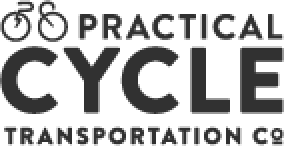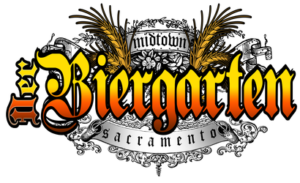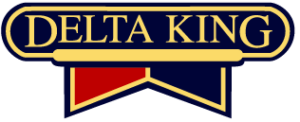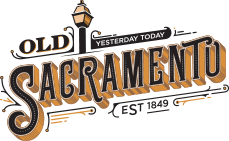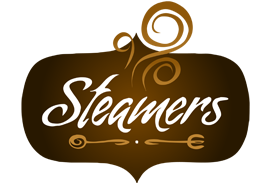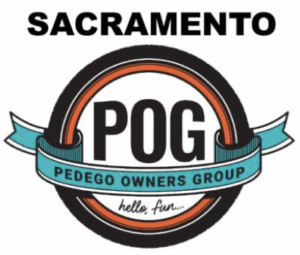Self Guided Tours
Treat yourself to the city from a new perspective.
CHOOSE YOUR ADVENTURE
Explore Sacramento at your own pace on a self-guided bike tour. There are lots of interesting things to do and places to see within riding distance of Practical Cycle. Here your will find trip information, maps, and bicycling directions.
Here are Destinations near Practical Cycle Folsom, 22 miles in about 3 hours plus time at destinations.
-
- Start at Practical Cycle Pedal Stop, 905 Leidesdorff St., cross the street to access the American River Parkway and go north to Old Town Folsom and the Powerhouse Museum.
- Then head north to the Folsom City Zoo and Johnny Cash Trail.
- At the end of the Johnny Cash Trail take Folsom Crossing to the other side of the river, then head south to the bridge back to Old Town or go North to Beals Point and the KOA Campground.
- Swim, BBQ, camp or rest and head back downhill to the CSU Aquatic Center and Nimbus Fish Hatchery (less than 10 miles) and finish with a 3 mile ride back to Practical Cycle Folsom after a full day riding around the Folsom area.
Download the Folsom Trail Map or use Google Maps for detailed directions.
START IN OLD SACRAMENTO ON J STREET AND FIREHOUSE ALLEY, LOOKING AT THE BRANNAN HOUSE
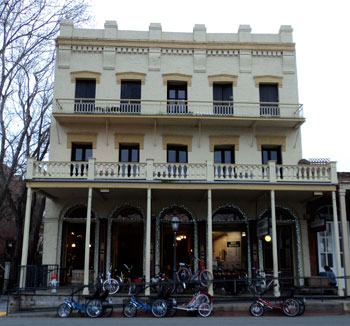
History of the Brannan House:
Built in 1853. Rumored to be haunted. Check out the middle door/window slope as a sign of the spirits living in the Brannan House.
In Old Town:
Railroad Museum (biggest in the country), Delta King (paddlewheel boat hotel) , Old Schoolhouse, Eagle Theater (first theater in CA).
STOP AT THE PONY EXPRESS STATUE
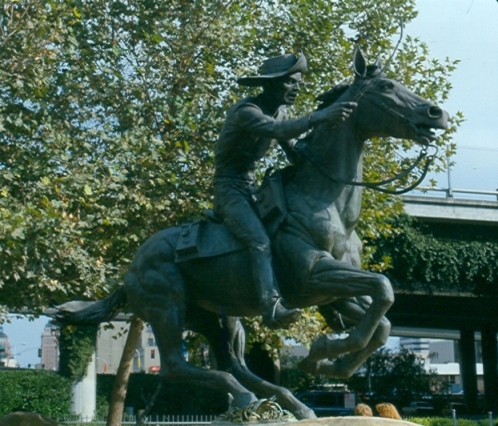
Pony Express (April 1860 - Oct 1861): Sacramento, CA to St. Joseph, Missouri. The entire trip took roughly 10 days and was necessary to keep California tied to the Union prior to the Civil War. Details: 157 Pony Express Stations, every 10 miles along the route. Horses changed every 10 miles while riders changed every 75-100 miles. Riders couldn’t weight more than 125 lbs.
The entire process took about 10 days. They were put out of business by the telegraph and actually never truly made a profit and only lasted 18 months.
RIDE SOUTH ON SECOND STREET TO CAPITOL MALL AVENUE. STOP ACROSS CAPITOL AVENUE ON THE PRESIDIO FOR A GOOD VIEW OF THE BRIDGE.
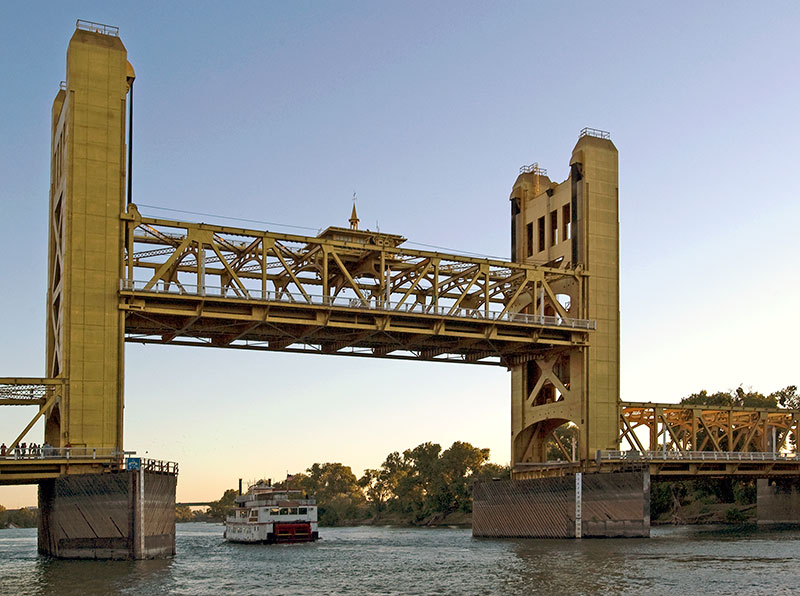
Tower Bridge
The great Tower Bridge was built in 1935. It was constructed to replace the inadequately sized M-Street Bridge that was completed about a decade earlier (1926). Its construction was funded by the federal government and is a product of New Deal money. It is an example of the Streamline Moderne architectural style popularized in the 1930s. It is a Lift Bridge, meaning that as the middle section can be raised to allow large ships and barges to enter and exit the river delta. When it was built, it was the first vertical lift bridge in the California highway system.
Color controversy: Originally, the bridge was painted a silver color. This remained for years until in 1976, the bridge was repainted with a gold/ochre color to resemble the gold lining on the inside of the re-vamped dome of the State Capitol. This color soon faded, and in 2001 the city took all citizens living within in 35 miles of the bridge. The poll asked which color the bridge should be re-painted. The options were red, blue, silver, and gold. Because California is the “golden” state, and it was important to distinguish the bridge from the tell-tale red of San Francisco’s Golden Gate Bridge, gold won by a landslide. Unfortunately, upon painting it, the color did not appear as gilded and truly gold as the people of the Sacramento Valley were expecting. Many complain that the color looks more yellow than gold, but some love it for its quirkiness.
NEXT STOP IS THE LELAND STANFORD MANSION. YOU WILL HEAD DOWN CAPITOL AVENUE UNTIL REACHING 7TH STREET. TAKE A RIGHT NO 7TH STREET AND THEN A LEFT ON N STREET. STOP ON N & 8TH STREETS IN FRONT OF THE LELAND STANFORD MANSION
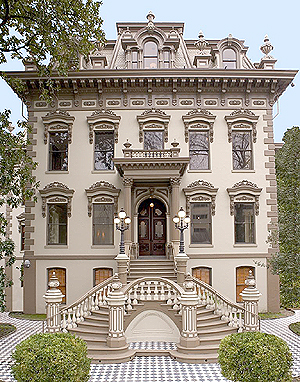
The Stanford Mansion was built between 1856 and 1874, though it was lived in before its completion. Leland Stanford lived in the mansion during his governorship in the early 1860s, and it was in this building that Leland Stanford, Jr., the namesake of Stanford University, was born in 1868. Unfortunately, Leland Stanford, Jr. died while traveling through Europe with his parents, where he caught typhoid. He died in Italy. In order to memorialize their son, the Stanfords first attempted to name a building at Harvard University in his name. When these efforts failed, they decided they would start their own University: Stanford. When the doors of Stanford University opened in 1891, it is rumored that the Stanfords stated that in starting Stanford University, all of California’s children would be their children.
When Leland Stanford was inaugurated governor, he had to leave his house from the front porch on a rowboat. It is said that when he returned from the address, the water had risen to the level of his window and he simply entered the house through the window!
HEAD WEST DOWN N STREET AND TAKE A LEFT AT 10TH. MOVE ONTO THE SIDEWALK AND THEN WALK THE BIKES UP TO THE STATE SEAL IN FRONT OF THE WEST SIDE OF THE STATE CAPITOL BUILDING.
While standing in front of the Great Seal of the State of California in front of the State Capitol Building
It is made of bronze and was hand-crafted by prisoners at San Quentin State Prison.
The general seal, as can be seen in this bronze rendition, has several features that pay homage to the history of California.
At the top, we see the state motto “Eureka,” which in English means “I Found It.” This motto was chosen because it refers to the discovery of gold in California in 1848, an event which brought on the fabled ‘49ers and numerous gold-seekers thereafter.
The goddess depicted in this seal is Minerva, a.k.a., Athena, the goddess of love and war. What ties her to California history, in particular, is the story of her creation. Athena is said to have burst forth from the head of Zeus, and when she came into being, she was a full-grown women. In this sense, she never went through childhood. California, when it was adopted into the United States of America, was never made a territory first. Instead, California was granted full statehood, and like Athena, burst forth full-grown.
Also on the seal you see the state animal, a grizzly bear, eating grapes, which represent California’s prolific wine country. There is wheat, a reference to state agriculture, a miner (gold mines), the Sierra Mountain Range, and the Sacramento River.
The building itself: originally built between 1860 and 1874, it was restored to make it earthquake safe and re-finish much of its interior. The original architect of the building was Reuben Clark. He was obsessed with getting the building exactly right, but his efforts were continuously thwarted by the frequent fires and floods that plagued Sacramento during the 19th century. After being accused of disloyalty to the Union, and after seeing his efforts continually thwarted, Clark was committed to a mental hospital in 1866 where he died later that year of “paralysis.” Before the building was restored in the 1970s, there was a debate over how it should be re-built: would the restore and reinforce the original design? Or would they instead tear the whole thing down and opt for two modern sky-scraper style towers? Their final choice is obvious.
Fun facts about the building: American Neoclassical style architecture. Columns are from the original building, they were brought over from Philadelphia and had to be transported around the tip of South America because they were transported prior to the building of the Panama Canal. The flags flying on over the building are the following: 1. US Flag 2. Bear Flag (flag of CA) 3. POW Flag originally flown in ‘70s but stands to this day.
JERRY BROWN’S APARTMENT AND CAPITOL PARK
Our next stop is 14th & N Streets, right in front of Jerry Brown’s apartment, where he lived as governor in the 1970s. This apartment is interesting because it represents Brown’s attempt to eschew the typical trapping of the governorship. It is rumored that he slept on only a mattress in the apartment, a symbol of his professed commitment to frugality.
Don’t forget Capitol Park, which is just across the street from Jerry Brown’s apartment. Capitol park is filled with trees from around the world as well as several monuments. There is a Vietnam Memorial monument, a Firefighters monument, as well as a monument to a Franciscan missionary, among other things. At the east end of the park there is an International World Peace Rose Garden, one of five around the world.
NEXT YOU’LL BE HEADING FURTHER EAST, GOING A COUPLE MORE BLOCKS ON N STREET, TAKING A LEFT, THEN TURNING RIGHT ON CAPITOL AVENUE.
Capitol Avenue Victorians
As you make your way down Capitol Avenue, look for a nice spot to stop where you have a good view of the Victorian style homes. Make sure the Victorians you are looking at have the tell-tale “story-up” architectural style, where they are built with the first floor up a story or about 10 or so feet.
When looking at these Victorians, take this opportunity to recall the history of flooding in Sacramento and the failed levy systems. These Victorians were built up, as you can see, because it was important that they not flood. When the flood waters came in during the winter, the interior of the homes were protected because of the added height.
YOUR NEXT STOP WILL BE SUTTER’S FORT. YOU WILL BE TAKING A LEFT TURN AROUND 27TH STREET.
Sutter’s Fort
Sutter’s Fort was established in 1938 by John Sutter. Sutter is an interesting and controversial historical figure. Though he is lauded by many Californians today because of his bravery, he is also known for his dishonesty and shady business. It’s true that he was bold in building a fort in the previously uninhabited Sacramento Valley, he did have another side. Sutter was from Switzerland, and when he left Switzerland for the United States, he let behind a wife, children, and a mountain of debt.
However, what you see is the product of his determination: a bustling fortress that housed a bakery; woodshop; gunsmith; blacksmith; canons; Indian laborers; a small, one room hospital, textile looms, and more. When Sutter employed Indians, he paid them in currency that could only be used at his fort thereby ensuring that they would not escape with their earnings. Also notable, on the other side of Sutter’s Fort, is the CA State Indian Museum which pays homage to the natives of the region (the Nisenan and Miwok Indians) and houses a number of artifacts.
Sutter’s Fort was also the long sought after destination of the Donner Party as they tried to cross the Sierras to arrive in California. Sutter sent several relief parties to meet the group, but they had to turn back because of inhospitable conditions. One of the most prized items currently inside the fort is the doll of one of the girls who made it successfully to California.
Gold was discovered in 1848, which spurred the 1849 gold rush. Though from the outside, it may appear that Sutter was in the right place at the right time, in reality, the opposite was true. Sutter sent a man named Marshall to establish a saw mill in the foothills of the mountains nearby. When Sutter arrived with his team of workers, they found gold almost immediately. Marshall invited Sutter to look at the gold, the two verified that it was, indeed, real gold, and they decided they would keep their discovery a secret. However, one of the workers decided that he could treat himself to a bottle of whiskey by taking a gold nugget down to a store in town. As soon as he presented the shopkeeper with the gold, the secret was out. Not only this, but Sam Brannan, the person who used to do business in the Brannan House where Practical Cycle is located, decided that he could get rich by “mining the miners” as they say, and he traveled to San Francisco and shouted on the streets that gold was discovered in the hills near Sacramento.
Soon the gold rush was in full swing, as the 1849 ‘49ers rushed the city and began mining. At first, Sutter got an economic boost out of the whole operation. However, once the miners started coming in hordes, they overtook his fort and refused to pay for materials he was selling. So in the end, Sutter got very little out of being the first courageous person to settle in the Sacramento Valley. He ended up dying with little money, and he continually made appeals to the government for cash as a reward for settling such a fundamental region of the United States.
Take note of the weaponry and arms at the fort and the history of those weapons. To fire a musket in 1839, they used a “flint-lock” starter to ignite the gunpowder.
Notice the flagpole outside the fort and the current version of the bear flag that flies on the pole.
The red strip at the bottom is a subtle reference to the red and white stripes of the US flag. The star is believed to be a symbol of solidarity with Texas - the lonestar state - which also seceded from Mexico and fought in the US/Mex war. The choice of the bear is somewhat debated. Some say it was to intimidate the Mexicans, because they were afraid of the ferocious grizzly bears, while others say they simply adopted it because the grizzly bear is a courageous and vicious animal. Today, the grizzly bear can no longer be found in CA.
AFTER SUTTER’S FORT WE RIDE AROUND THE FORT, NEXT TO THE CA STATE INDIAN MUSEUM, AND BACK TOWARD OLD SAC. THE NEXT STOP IS ON 16TH & H STREETS AND IS THE GOVERNOR’S MANSION. WE GET THERE BY TRAVELING WEST ON ANY LETTER STREET. IT IS GOOD TO TURN RIGHT DOWN 20TH STREET, THE HEART OF MIDTOWN. NEXT TURN LEFT ON H STREET (ONE-WAY GOING WEST) AND STOP AT THE MANSION.
The Governor’s Mansion (16th & H)
The Governor’s Mansion was purchased by the State of CA in 1903 from a local businessman for $32,500. After adding an additional wing and an office for the governor, the total cost was $56,000 to the state.
The first governor to live there was Governor Pardee. In total 13 governors lived at the mansion, including Earl Warren, who later became the Chief Justice of the US Supreme Court, and Ronald Reagan (the last governor in residence) who became US President.
Various governors throughout time have left their respective marks on the place. The first major change to the mansion came from Minnie Johnson, the wife of Hiram Johnson, who was elected in 1910. She decide that the carved mahogany walls were too dated and chose to modernize the place by painting the interior a battleship gray color. They say that they have never been able to get the walls back to their original finish since. Another mark was left by Kathleen Brown, the daughter of former Governor Pat Brown and the sister of former Governor Jerry Brown. She painted the claws on the claw foot bathtub outside the master bedroom a bright red color.
As previously stated, the last governor living in the Mansion was Ronald Reagan. Reagan and his wife, Nancy, moved out of the mansion because they claimed it was not earthquake safe. They moved into a house in the “Fab 40s” region of the city.
TO GET TO THE CATHEDRAL (OUR NEXT STOP), WALK THE BIKES TO 17TH STREET. TAKE 17TH STREET SOUTH AND TURN RIGHT IMMEDIATELY ONTO I STREET. FOLLOW I STREET UNTIL YOU HIT 13TH STREET AND HANG A LEFT ON THIRTEENTH FOLLOWED BY A RIGHT ON K STREET. STOP AT THE CATHEDRAL ON K & 11TH STREETS.
The Cathedral of the Blessed Sacrament (K & 11th Streets)
The Cathedral of the Blessed Sacrament - the name is associated with the name of the city: Sacramento. The city was named such because a missionary named Moraga (which is the name of a nearby town) called the valley sacred.
The cathedral was built by Patrick Manogue, who got rich during the gold rush. Unlike his fellow gold rushers, Manogue mined gold in order to fund his goal of becoming a Roman Catholic Priest. He used some of the money he made to fund a trip to Paris where he attended seminary school. While there, he became enchanted with European cathedrals and decided to use his remaining funds to build such a cathedral in Sacramento. The cathedral was started in 1887 and completed in 1889 and is the largest cathedral west of the Mississippi. It is directly modeled after the Cathedral of the Holy Trinity in Paris. Inside there is a 2,000 lbs cross.
After the Cathedral, head back down K Street. When you get to the mall, we either take a nice stroll through Westfield and get on your bikes on the other side, or take a left at the mall and head back toward Old Sac via L Street. Either way, you will go by the cell phone clock tower, the archway, and into the tunnel that leads back into Old Sacramento. While in the tunnel you can stop to admire the timeline of Sacramento History that showcases key figures from the region.
After a 14-year, $22 million restoration and rehabilitation, the Mansion is now open to the public as a museum. It also serves the citizens of California as the state’s official reception center for leaders from around the world.
The Leland Stanford Mansion is a stunning example of the splendor and elegance of the Victorian era in California. On your tour of the 19,000-square-foot Mansion you will see:
- 17-foot ceilings
- Gilded mirrors and exquisitely detailed carved moldings
- Beautifully restored woodwork
- Elegant 19th century crystal and bronze light fixtures
- Historic paintings
- Re-created carpeting and draperies based on photographs from the 1870s to match the original interior design
- Original period furnishings that belonged to the Stanfords
- 19th-Century style gardens
Originally built in 1856 by Gold Rush merchant Sheldon Fogus, the Mansion was later purchased and remodeled (twice!) by Leland and Jane Stanford. Leland Stanford served as Governor of California from 1862-1863. The Mansion served as the office of three governors during the turbulent 1860’s - Leland Stanford, Fredrick Low and Henry Haight.
As a pro-Union Civil War governor and president of the Central Pacific Railroad, Leland Stanford negotiated political and business deals at the Mansion that helped complete the transcontinental railroad.
Jane Lathrop Stanford gave birth to their only child, Leland, Jr., here on May 14, 1868. The couple’s new wealth enabled them to expand the mansion in 1872, creating the architectural legacy you can see today.
In 1900 Jane Stanford gave the mansion to the Catholic Diocese of Sacramento, with an endowment of $75,000 in railroad bonds, for the “nurture, care and maintenance of homeless children.” The Sisters of Mercy, and later the Sisters of Social Service, adapted the aging building to their needs. As decades passed, the old neighborhood gave way to state office buildings, and the cost of upkeep grew. In 1987, the Stanford Home for Children moved to new facilities in north Sacramento.
In 1978 the State of California purchased the property for use as a state park. The imposing structure was listed as a National Historic Landmark in May 1987.
Guided Tours
Tours offered from 10:00 am - 5:00 pm (last tour begins at 4:00 pm).
Tours may be cancelled at certain times due to official activities inside the Mansion. Please call (916) 324-0575 prior to your visit.
Stanford Mansion is closed Monday's and on Thanksgiving, Christmas & New Year's Day.
Tour Fees:
- Adults- $5
- Youth- $3 (ages 6 to 17)
- Children- Free (5 and under)
OLD SACRAMENTO TO STANFORD MANSION
In the heart of Sacramento, California’s State Capitol embodies the best of California’s past and present. Forty acres of lawns, flower gardens and memorials to California history surround the building. Stately trees in Capitol Park, including many exotic species planted over 100 years ago, thrive in Sacramento’s climate.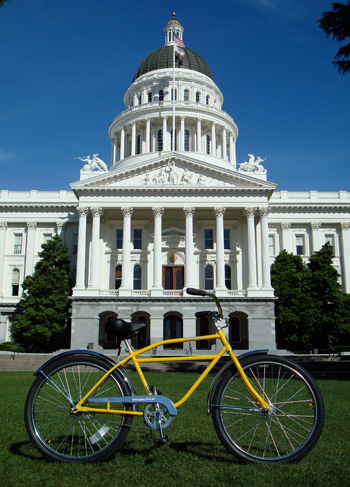
The Capitol is a hub of activity— visitors might be inspired to join a rally for a favorite cause, attend a legislative session, visit lawmakers in their Capitol offices, or relax on the lawn for a shady picnic. During the holiday season, visitors might discover a festive musical concert in the first floor Rotunda. Informative exhibits on California’s 58 counties highlight the first floor of the East Annex.
The Capitol has gone through many changes. Electricity first augmented, then replaced gaslight between 1892 and 1895. In 1906 a remodeling of the area now called the West Wing created more office space. The East Annex, completed in 1952, added even more offices. When a 1972 study of the building showed it to be unsafe in the event of an earthquake, the “Old Capitol” was scheduled for renovation. By 1982 the building was restored to its original early twentieth-century elegance. Today it is a working museum. Period displays include the 1906- era Governor’s office suite; the Treasurer’s Office circa 1906 and 1933; and the 1902 office of the Secretary of State. For a special treat, visit the Rotunda, which begins on the first floor and rises 120 feet to the inner dome.
California's State Capitols
Californians wrote the first California State Constitution in Monterey in 1849, and on September 9, 1850, California became the thirty-first state. Between 1849 and 1854, four cities served as state capitals—San Jose, Vallejo, Benicia and finally, Sacramento. Construction on the new Capitol began in 1860 and concluded in 1874. However, eager lawmakers moved into the unfinished building in 1869. Today the Capitol is home to 40 Senators, 80 Assembly Members, the Governor and Lieutenant Governor.
Capitol Park
During the winter of 1870,the original four square blocks of the Capitol grounds were planted with 800 trees and flowering shrubs of nearly 200 varieties from all parts of the world. Today there are more than 450 varieties represented. Capitol Park features memorials to significant events involving California:
- A Civil War Memorial Grove planted in 1897 with saplings from famous Civil War battlefields.
- A life-sized statue of Father Junípero Serra, a Roman Catholic missionary sent by Spain to help colonize California. At its base is a map of California’s 21 missions, from San Diego to Sonoma.
- The California Vietnam Veterans Memorial,with life-size bronze figures of servicemen and women, depicting military life in Vietnam and featuring engravings of names of Californians killed or missing in action.
- The California Veterans Memorial, a granite obelisk honoring California Veterans from the Mexican-American War, Civil War, Spanish-American War, World War I, World War II, the Korean War, the Vietnam War and the Persian Gulf War.
Legislative Sessions and Committee Meetings
Visit the restored Legislative Chambers and watch today’s lawmakers at work in surroundings that echo the past. Seated at desks built in the 1860s, representatives propose, discuss and vote on new laws, helping to create the world of tomorrow. Legislative sessions are held on Monday and Thursday from early January through late August. First come, first served gallery seating is available to the public during sessions, and committee meetings take place during every day of the business week.
School/Group Tours
Free guided school and group tours are by reservation only. Groups are limited to 35 persons. We recommend a ratio of ten students to one adult chaperone. For tour reservations, call (866) 240-4655. To receive educational materials and school group rules, visit our Web site at www.capitolmuseum.ca.gov, or call the Tour Office at (916) 324-0333.
Public Tours
The State Capitol Museum conducts tours daily, on the hour, from 10 a.m. to 4 p.m.
Other Amenities
- The Tour Office (located in basement Room B-27) is open daily from 9 a.m. to 5 p.m.
- The Museum Theater features films on the history of the Capitol from 9 a.m. to 5 p.m.
- Cafeteria-style restaurants are open Monday-Friday, 7:30 a.m. to 3 p.m. in the basement and on the 6th floor. Coffee service is also available in the basement Monday-Friday 7 a.m. to 3 p.m.
- A gift shop, located in the basement, in open Monday-Friday 9:30 a.m. to 4:30 p.m.: weekends, 10:30 a.m. to 4 p.m.
California State Capitol Website
OLD SACRAMENTO TO CALIFORNIA STATE CAPITOL
Governor George Pardee, his wife Helen and four daughters were the first residents of the “new” Governor’s Mansion. During the next 64 years it was home to the families of 12 other governors. Among these were Nina and Earl Warren with six children, and Nancy and Ronald Reagan with their two children. Warren later became Chief Justice of the United States Supreme Court, and Reagan became president of the United States.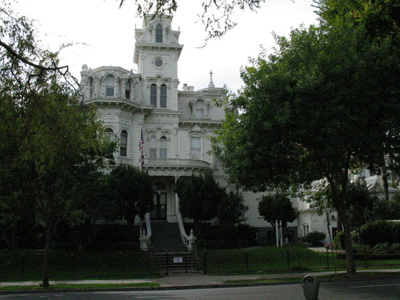
California’s executive mansion, popularly known at the Governor’s Mansion, was built in 1877 for Albert and Clemenza Gallatin. Albert was a partner in the Sacramento hardware store of Huntington & Hopkins. The State of California purchased the house from Joseph and Louisa Steffens to use as a home for California’s first families in 1903 for $32,500. Victorian architecture was somewhat out of style by then, but the house was suitably impressive, conveniently located, and comfortable.
Today’s guests see marble fireplaces from Italy, gold framed mirrors from France, and exquisitely handcrafted hinges and doorknobs, all of which are reminders of the Gallatins and the Victorian era. Outside some of the Mansion’s abundant vegetation includes flowers, shrubs, and trees dating back to 1877. But when visitors look behind the grape stake fence and see Governor Brown’s swimming pool built in 1959, they are reminded that the Governor’s Mansion State Historic Park is really a walk through time.
The park is located at the corner of 16th and H Streets in downtown Sacramento. A small gift shop is located in the carriage house, where the entry fees are collected and the tour orientation begins.
Entry to the Mansion is by guided tour only.
Guides conduct tours on the hour, 10:00 a.m. to 4:00 p.m.
Closed Monday's and on Thanksgiving, Christmas, and New Year's Day.
Admission:
- Adults- $5
- Youth- $3 (ages 6 to 17)
- Children- Free (5 and under)
OLD SACRAMENTO TO THE GOVERNOR'S MANSION
In 1839 a Swiss immigrant named John Sutter received a land grant in the Sacramento Valley from the Mexican government. He used the land to create a flourishing agricultural empire and named it New Helvetia (New Switzerland.) This empire established Sacramento’s earliest settlement and the first non-Indian settlement in California’s Central Valley.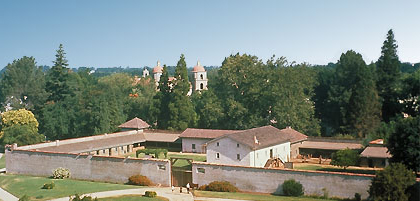
In 1847 Sutter sent aid to the Donner Party, a group of immigrants trapped in a winter storm in the Sierra Nevada Mountains. Word spread and Sutter became known for his hospitality and for providing temporary refuge to travelers. This reputation made New Helvetia the destination for early immigrants to California.
Less than a decade after they were established, Sutter’s properties were overrun by gold seekers and the fort is all that remains of New Helvetia. It has been restored to its former state based on an 1847 map published in Darmstadt, Germany and is open daily for tours.
Hours and Location:
The park is located in midtown Sacramento between K and L Streets and 26th and 28th Streets.
Open 10:00 a.m. until 5:00 p.m. Tuesday through Sunday, closed Monday.
Admission:
- Adults- $5 (18 years and older)
- Youth- $3 (ages 6 to 17)
- Children Free- (5 and under)
OLD SACRAMENTO TO SUTTER'S FORT
AMERICAN RIVER PARKWAY NB FROM OLD SACRAMENTO
The American River Parkway is Sacramento's best kept secret. This unique wildlife and recreation area begins in Old Sacramento and Runs over thirty miles along the American River Parkway to Folsom Lake. Picnic sites, swimming, fishing, golfing, guided tours and much more are just steps away from the paved bike trails.
Bannon Slough, the American River and the Sacramento River merge at the western end of the Parkway -- Discovery Park. Reservable picnic sites, an archery range, large beach, boat ramp and many acres of habitat make it a desirable destination. Bannon Island and the slough provide year-round riparian and open water habitat for wildlife.
Once filled from recurrent high water in the river, Bushy Lake now receives most of its water from wells at nearby Cal Expo, site of the California State Fair. The lake and surrounding grasslands provide important habitat for wood ducks which are home to the valley elderberry long horned beetle, a federally and state protected endangered species. Bushy Lake is popular with bird-watchers and hikers seeking uncrowded and natural conditions.
Paradise Beach is almost like a freshwater ocean beach, with sand dunes and a gently sloping beach to lie on. The oxbow bend in the river creates a cove where swimmers and skimmers can play. The park is a popular destination for swimming families and young adults. Paradise Beach is an excellent lazy-day summer destination.
Extensively mined for gravel, Arden Bar was reclaimed and named for William B. Pond, former director of Sacramento County Parks Department. The Recreation Area now is one of the most well established and popular parks along the river. It features a warm water fishing pond regularly stocked with trout, largemouth bass, sunfish, crappie and catfish and is equipped with a handicapped accessible fishing pier. Paved walking trails gently slope around the park, leaving no barrier between enjoyment of nature and every park visitor.
River Bend Park is one of Sacramento’s oldest county parks. A long central road paralleling the river links you to this park’s many recreation facilities. Wild turkeys and deer rustle in the grass beneath young oaks, while the bright green, carefully cared-for picnic area is a delicious place to stop for lunch.
Sarah Court is a riverside area is tucked between private properties. An access ramp and steps provides narrow river access to nearly everyone. A tree-dotted parking area gives way to a steep bank, while the ramp and steps lead to a small, rocky beach. Secluded and little known, this quiet spot may seem at times like your very own private beach.
Ancil Hoffman Park is dotted with ancient oaks and bordered on two sides by the American River. It is also home to the renowned Effie Yeaw Nature Center, an award-winning environmental and cultural education center, featuring exhibits, trails, and interpretive programs in 77 acres of riparian woodland, grassland, and oak woodland. Walk among reconstructed Maidu Indian homes or hit a bucket of golf balls at the award-winning Ancil Hoffman golf course.
Made necessary by the Folsom and Nimbus Dams blocking access to historic spawning gravels, the hatchery artificially spawns king salmon and steelhead, raises the young and releases them back to the river as well as into the Delta. The best time to take advantage of the self-guided tour of the hatchery's educational displays and the visitor center is during the peak migration time for salmon, October through December.
Nimbus Dam forms a reservoir called Lake Natoma that serves as the regulator of flows from Folsom Dam and diverts water into the Folsom South Canal, capable of carrying 3,500 cfs into the San Joaquin Valley. CSUS operates it Aquatic Center here and provides opportunities for flatwater recreation including rowing, wind-surfing, and canoeing.
Beal's Point on Folsom Lake features barbecue pits, shade areas and large grassy areas that can accommodate many family picnics and other activities. It is one of two locations on the lake that allows overnight camping. Reservations can be made by calling 1-800-444-7275. The Beal's Point Snack Bar also rents beach equipment. The beach equipment includes pedal boats, sail boards, sail boats, jet skis, canoes, volleyball sets, row boats, shade canopies, and rafts of all sizes. Sail board lessons are also available for those wanting to learn how to windsurf.
Newsletter Subscription
Monthly News & Specials
"*" indicates required fields
Sacramento Pedego Owners Group
Weekly details of local group rides.
"*" indicates required fields
